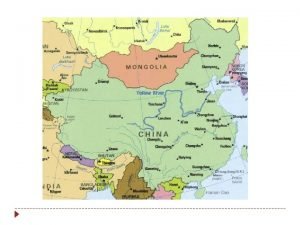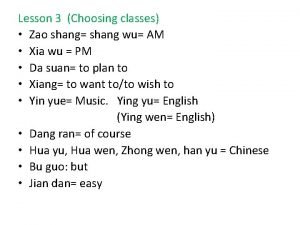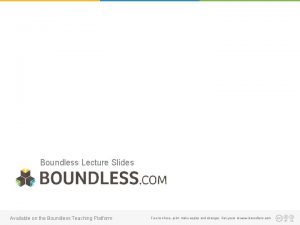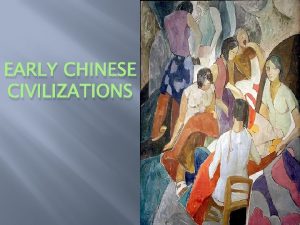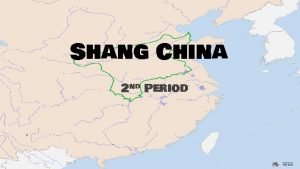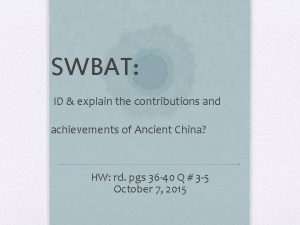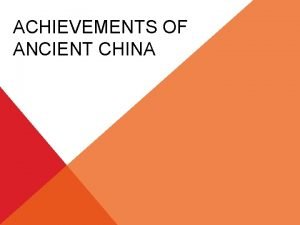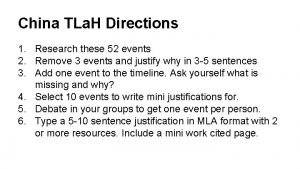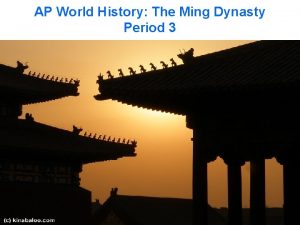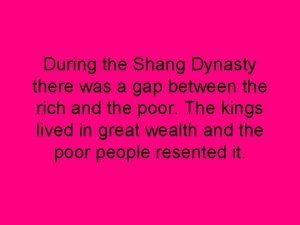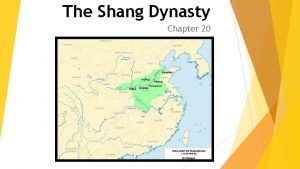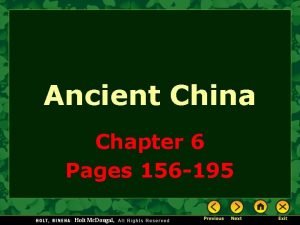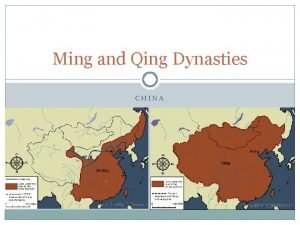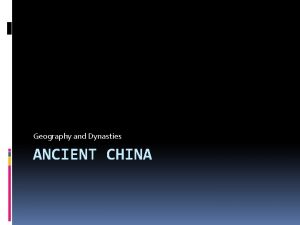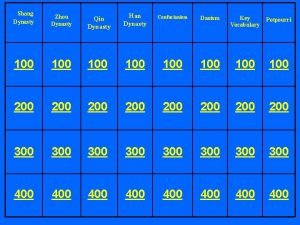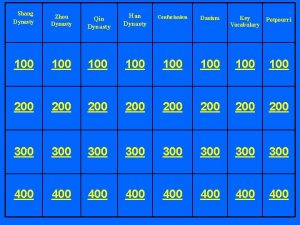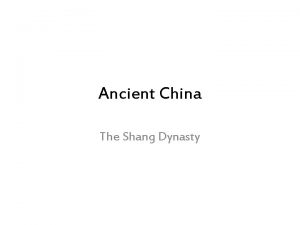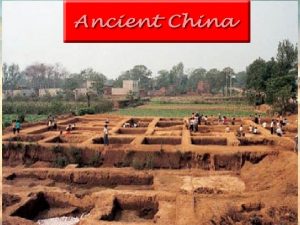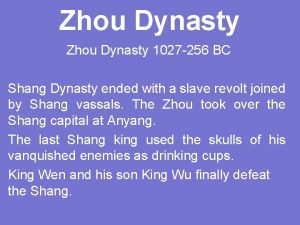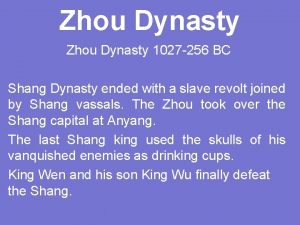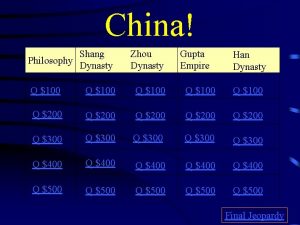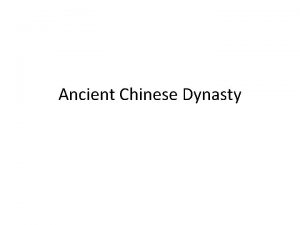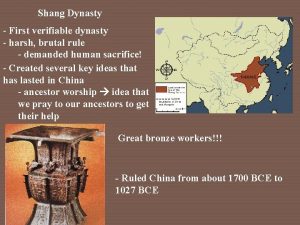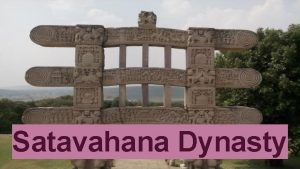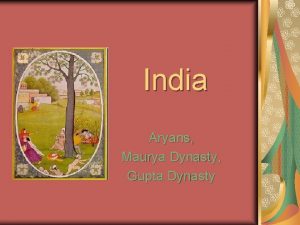Geography Jeffrey Huallpa Shang Dynasty Location The Shang







































































- Slides: 71

Geography Jeffrey Huallpa

Shang Dynasty Location • The Shang dynasty was located in northeast, which was called inner China.

What it is Now Called • As of now presently, it is just called Beijing.

Landforms • There were many landforms to settle, including the Himalaya mountains which is located in the southwest.

Settlement Benefits • It became poor or rich depending on if they lived in a place where for example, if there was no water.

Settlement • Some people were exposed to large bodies of water depending on where they settled.

Why They Settled Where They Did • They did because some people lived where the is more of something than another place.

Advantages • The advantages is the riches when the water overflowed.

Time Period ANCIENT CHINA by Imani Mc. Clintock

TIME PERIOD Ancient China • Ancient China civilization emerged in 2070 BC with the rise of the Xia Dynasty • The Xia Dynasty existed from 2070 BC – 1600 BC • Yu the Great was able to prevent floods from destroying the crops and the Xia tribe became strong. Yu soon became the leader of other tribes and was even stronger in power after defeating a tribe at the border. Yu was named the king of the Xia Dynasty when the last of the Five Emperors named him to be king before he died. Before his death, Yu named his own son ruler of the Xia Dynasty.

Time Period Ancient China • In 1675 BC the Xia Dynasty was overturned by King Tang who formed the Shang Dynasty. • The Shang Dynasty lasted more than 600 years and was ruled by 30 different emperors. • Tang was a giving and compassionate leader • Because Tang was generous the people were happy and at ease and they began to accomplish a better way of life. • The economy and the culture grew with the first nine emperors of the Shang Dynasty.

Time Period Ancient China • Agriculture and fishing grew during this time. The bronze wares, jade carving and woven silk fabrics were skills that made the Shang Dynasty successful. • The conditions of the dynasty began to decline with the tenth ruler. His family attempted to overthrow him and he eventually lost his power. • The last emperor of the Shang Dynasty lived in wealth but treated his advisors and the people badly. • The economy grew weak from the excessive spending and the military was weakened after years of fighting. • Zhou defeated the Shang dynasty under the leadership of King Wu.

Timeline Ancient China
















Ancient China Government Imani Mc. Clintock

Structure § Ancient Chinese government was ruled by dynasties. § Dynasties often competed with each other to gain control over areas. § The Chinese government was a monarchy – this is where the decisions and laws are decided by one person, usually a king.

KING/Emperor ruled the dynasty Lords • Appointed to protect and carry out the Kings laws Knights • Appointed to protect the Lords and the King Servants • Appointed to work the land.

Emperor Contributions § Emperor Kangxi – ruled for 61 years. The empire gained wealth. He was a master in Confucianism. He brought the Yellow River under control and promised to never raise taxes. § Emperor Chengzu – began exploratory sea voyages to the West Sea § Emperor Khan – was a great military leader. He built the larges empire in Chinese history. He promoted trade and tolerance of religion. § Emperor Taizu – encouraged freedom of speech and thought this helped the growth of science, arts and literature.

Emperor Contributions § Emperor Taizong – had compassion for the peasants. He enforced the land dividing system which promoted fair taxation. § Emperor Sui – unified China and started the construction of the Grand Canal. He also developed the imperial examinations which was used to choose government officials. § Emperor Shihuang – responsible for the construction of the Great Wall of China.

Laws § The basic law of ancient China was devotion of children to their parents and for every to obey the government. § All other laws were put into place by the emperors. § Chinese officials (called Mandarins) were required to teach the laws to the people. § The punishment for breaking laws depended on the crime. § If a crime was severe enough the punishment would be death or one could be banned from the area.

Laws § A girl who insulted her parents would be strangled. A person convicted of murder would have their head cut off. § If a person committed a crime against an emperor, they were showed no mercy, they would be tortured and then killed.

Religion of Ancient China By: Bryson Jackson

Worship of the Shang In the Shang dynasty the type of worship they practiced was ancestor worship. Ancestor worship is when people of the Shang honor their ancestors through rituals such as offering food and wine to the dead.

Origin The origin of this religion was between 1700 ti 1122 B. C. E.

Evolution The religion evolved over time because the king had relationships to ancestral spirits.

Major Religious Leaders The major religious leaders of ancient China were the Zhou and Quin dynasties.

Contributions Bryson Jackson

Technological Innovations • This civilization made a variety of weapons out of bronze.

Their Form of Communication • The type of communication this civilization used was logographs, characters that stand for words.

Why it was Developed • It was developed because it helped to unify the Chinese people.

The Role of the Arts • The role that the arts played in this civilization was the invention of paper.

Main Art Forms • The main art forms of the Shang was paper, paint, and weapons.

Architecture • Officials were punished if the grain in storehouses spoiled or if a wall built under their supervision collapsed.

The Arts • The arts can inform us about the people who lived during that time by painting them out.

CONTRIBUTIONS Mahalya Daye

• The people of the Shang Dynasty used bronze to create their technology. • Bronze was mostly used to make weaponry. • This weaponry was used to fight in wars.

• The people of the Shang did not have a spoken language. • They communicated through writing. • The Shang Dynasty created logographs. • Logographs are graphic symbols that stand for words.

The Development of Written Communication • The Shang’s written communication was very special. • It was special because they made it up themselves. • It was then revealed to other Chinese civilizations and they started doing it. • These civilizations believed that having a written language helped in the unification of the people of China.

• The Shang Dynasty also used bronze for art. Shang Art and the Main Form of It • Artists and craftspeople made aesthetic watercrafts. • The main form of art in this civilization was jade pieces, which were made of stone. • Some of those vessels had a special artist’s touch to it. • They had additions like radiant designs and mythical creature pictures on it.

• The mythical creatures that they made makes their art show what they believe in. • The pictures also show what they worship. • They worship my 5 hical creatures and gods.

Artifacts that Explain the Shang • One of the artifacts that explains the people of the Shang is jade discs. • They were made by the craftspeople. • These jade discs were made for the kings. • The kings needed these discs to give to the nobles to symbolize the power of the nobles.

Artifacts that Explain the Shang • This artifact shows that the kings cared for their nobles. • Another artifact made by the craftspeople are stone sculptures. • These sculptures are of farm animals that Shang farmers would have on a farm. • This shows that the Shang people wanted people to know about their farm animals.

Ancient China CONTRIBUTIONS BY IMANI MCCLINTOCK

Ancient China - Contributions There are many technological inventions by Ancient China including bronze which was used to make weapons. Gun powder, paper, the compass and printing are considered four of the great inventions. Paper was invented in the second century B. C. and was used for money.

Ancient China - Contributions The wood block printing press was invented in 868 A. D. The magnetic compass was invented to help in building homes and to make maps. In the nineteenth century, gun powder was invented. This was made originally as a potion for immortality & later the military use.

Ancient China - Contributions Early Chinese writing used pictographs as their writing tool. Later, phonetics was used with pictographs to enhance their writing system. The Shang Dynasty used pictographs and the Rubus. Two pictures were put together form one word. For example, a picture of a bee next to a picture of a leaf would represent the word “belief”.

Ancient China - Contributions The writing and speaking tools were used to communicate. As the Chinese defeated their neighbors their writing and speaking styles were applied to those neighboring countries.

Ancient China - Contributions Pottery and calligraphy are two of the main art forms of ancient China. Before paper was invented, calligraphy was written on silk fabric. The Shang dynasty had artist that were great at working with bronze and jade. Ancient Chinese architecture followed the ideas of Chinese philosophies (beliefs). The first idea was that buildings should be long and low instead of tall.

Ancient China - Contributions The second idea was that both sides of the building should be the same and balanced. During the Han Dynasty, Buddhism was introduced and pagodas which are Buddhist temples were developed. These buildings were tall and thin to keep sacred items in. The arts showed how the Chinese were dedicated to their ruler and their beliefs.

Ancient China - Contributions Shaolin temple, founded in the 5 th century and is long famous for its association with Chinese Martial Arts particularly Shaolin King Fu

Ancient China - Contributions Bronze vessel artifact of the Shang Dynasty era Bronze axe used in hand to hand combat. It was also a ritual object that symbolized military authority.

Ancient China - Contributions Traditional ancient Chinese home Yueyang Tower was built in the Qing Dynasty (1636 – 1911)





 Yellow river shang dynasty
Yellow river shang dynasty Shang dynasty location
Shang dynasty location Zao shang hao zhong guo
Zao shang hao zhong guo Chinese dynasties
Chinese dynasties Shang dynasty
Shang dynasty Shang dynasty timeline
Shang dynasty timeline Shang dynasty language
Shang dynasty language Shang dynasty jobs
Shang dynasty jobs Contributions of the shang dynasty
Contributions of the shang dynasty What were two accomplishments of the shang dynasty
What were two accomplishments of the shang dynasty Shang dynasty map
Shang dynasty map Ap world
Ap world Why did wu wang led a rebellion
Why did wu wang led a rebellion Shang dynasty
Shang dynasty Shang dynasty map
Shang dynasty map Shang dynasty acrostic poem
Shang dynasty acrostic poem Shang dynasty
Shang dynasty Chinese dynasty acrostic poem
Chinese dynasty acrostic poem Qing dynasty location
Qing dynasty location Rise of the qing dynasty
Rise of the qing dynasty Chinese dynastys
Chinese dynastys A cross country skier moves from location a to location b
A cross country skier moves from location a to location b Location planning in operations management
Location planning in operations management Mr. help geography
Mr. help geography Relative location definition geography
Relative location definition geography Formal region example
Formal region example Location
Location Cartogram definition ap human geography
Cartogram definition ap human geography Ap human geography political geography test
Ap human geography political geography test Frq ap human geography format
Frq ap human geography format 5 themes of geography ap human geography
5 themes of geography ap human geography đặc điểm cơ thể của người tối cổ
đặc điểm cơ thể của người tối cổ Cách giải mật thư tọa độ
Cách giải mật thư tọa độ Các châu lục và đại dương trên thế giới
Các châu lục và đại dương trên thế giới Tư thế worms-breton
Tư thế worms-breton ưu thế lai là gì
ưu thế lai là gì Thẻ vin
Thẻ vin Tư thế ngồi viết
Tư thế ngồi viết Bàn tay mà dây bẩn
Bàn tay mà dây bẩn Các châu lục và đại dương trên thế giới
Các châu lục và đại dương trên thế giới Từ ngữ thể hiện lòng nhân hậu
Từ ngữ thể hiện lòng nhân hậu Bổ thể
Bổ thể Tư thế ngồi viết
Tư thế ngồi viết Thế nào là giọng cùng tên? *
Thế nào là giọng cùng tên? * 101012 bằng
101012 bằng Thể thơ truyền thống
Thể thơ truyền thống Bài hát chúa yêu trần thế alleluia
Bài hát chúa yêu trần thế alleluia Khi nào hổ con có thể sống độc lập
Khi nào hổ con có thể sống độc lập đại từ thay thế
đại từ thay thế Diễn thế sinh thái là
Diễn thế sinh thái là Vẽ hình chiếu vuông góc của vật thể sau
Vẽ hình chiếu vuông góc của vật thể sau Công của trọng lực
Công của trọng lực Thế nào là mạng điện lắp đặt kiểu nổi
Thế nào là mạng điện lắp đặt kiểu nổi Tỉ lệ cơ thể trẻ em
Tỉ lệ cơ thể trẻ em Lời thề hippocrates
Lời thề hippocrates Vẽ hình chiếu đứng bằng cạnh của vật thể
Vẽ hình chiếu đứng bằng cạnh của vật thể Quá trình desamine hóa có thể tạo ra
Quá trình desamine hóa có thể tạo ra Môn thể thao bắt đầu bằng chữ f
Môn thể thao bắt đầu bằng chữ f Hình ảnh bộ gõ cơ thể búng tay
Hình ảnh bộ gõ cơ thể búng tay Sự nuôi và dạy con của hổ
Sự nuôi và dạy con của hổ điện thế nghỉ
điện thế nghỉ Dạng đột biến một nhiễm là
Dạng đột biến một nhiễm là Biện pháp chống mỏi cơ
Biện pháp chống mỏi cơ Trời xanh đây là của chúng ta thể thơ
Trời xanh đây là của chúng ta thể thơ độ dài liên kết
độ dài liên kết Gấu đi như thế nào
Gấu đi như thế nào Thiếu nhi thế giới liên hoan
Thiếu nhi thế giới liên hoan Tia chieu sa te
Tia chieu sa te Một số thể thơ truyền thống
Một số thể thơ truyền thống Thế nào là hệ số cao nhất
Thế nào là hệ số cao nhất Hệ hô hấp
Hệ hô hấp
